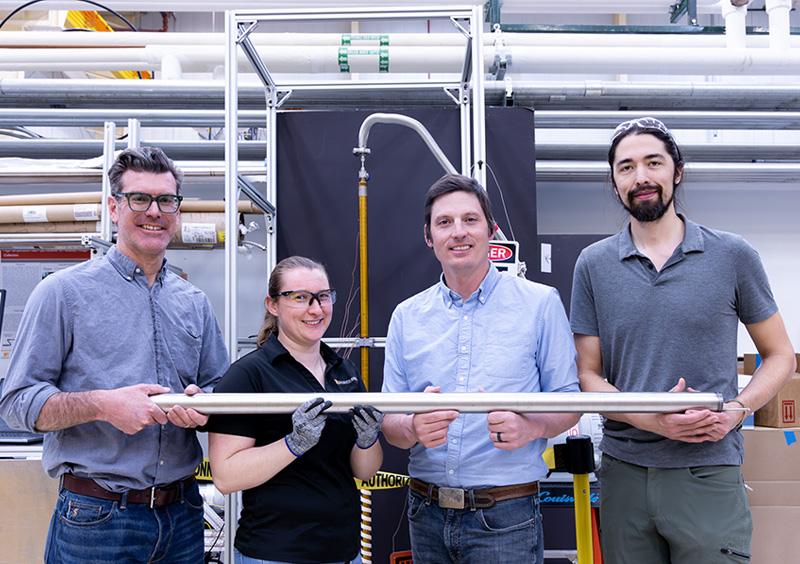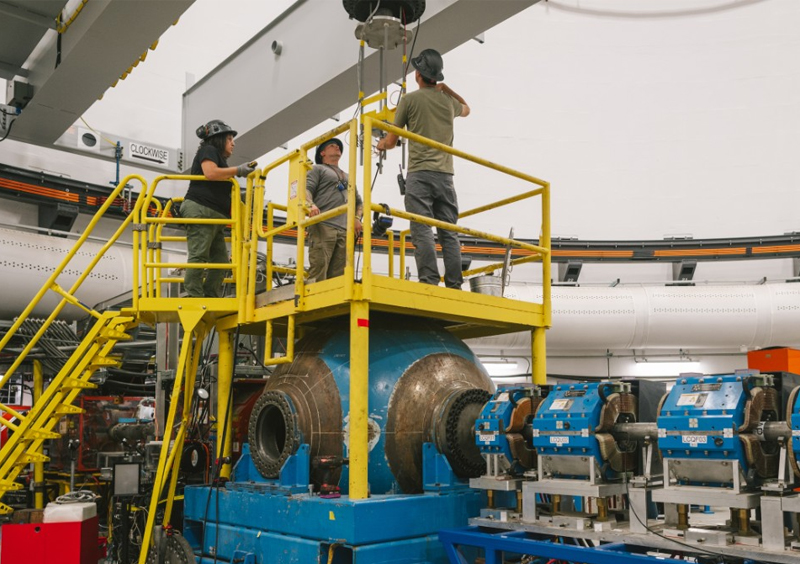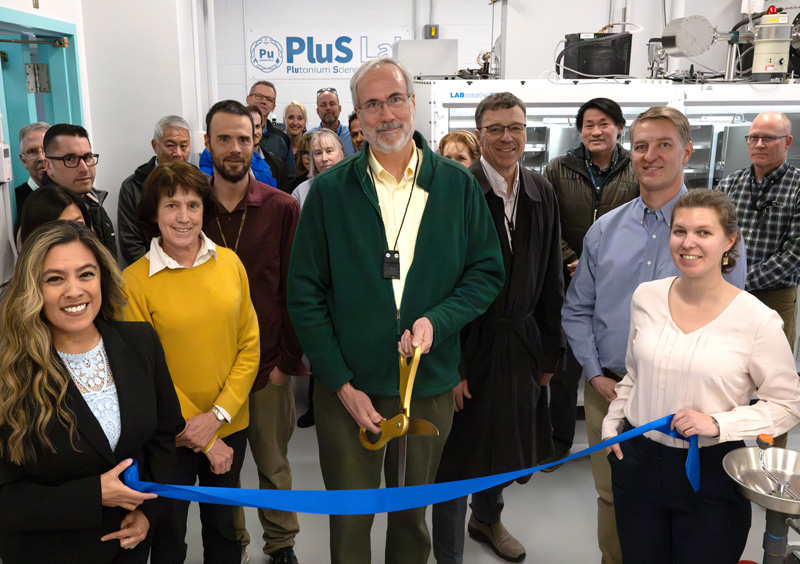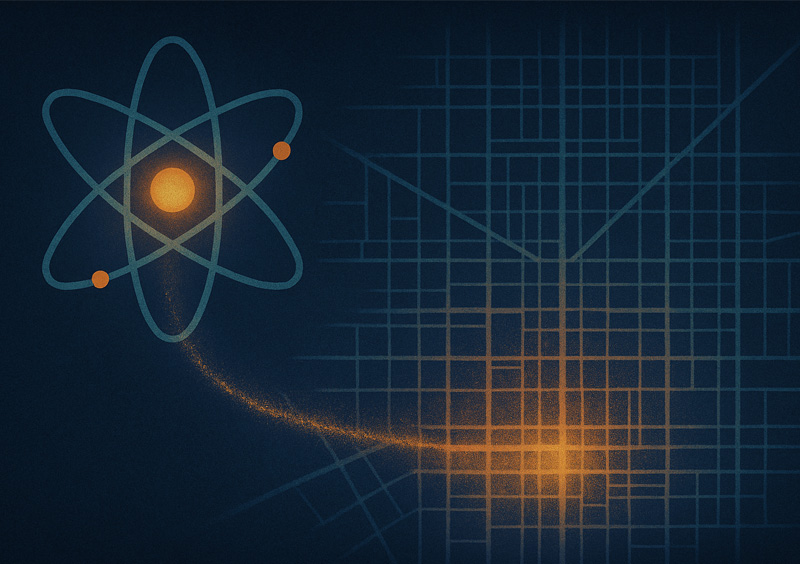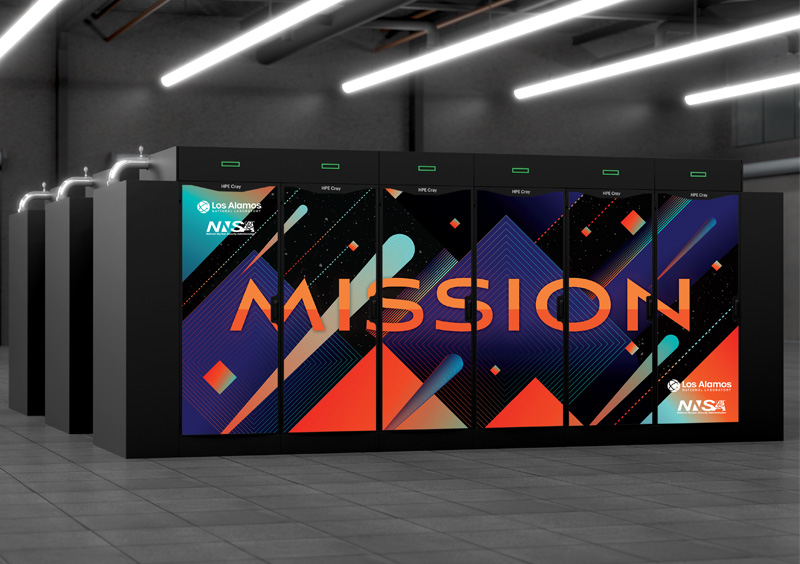When Topher Matthews, a nuclear engineer at Los Alamos National Laboratory, invited four materials scientists to meet in a Lab conference room for breakfast burritos in 2021, they had just returned on-site after the COVID-19 pandemic lockdown. Everyone was tired of the isolation and frustrated with the slow progress of their nuclear energy work, each toiling away on their own pieces.
The question they posed to each other was: "What would happen if we developed a reactor with real-world, off-the-shelf materials? How could we build a prototype reactor in three years?"
In a matter of weeks, they outlined a full-system, integrated microreactor project.
Compact and capable of running for years without refueling, nuclear microreactors offer the potential to supply energy to isolated areas, such as remote military, commercial and disaster sites. However, this emerging technology faces implementation challenges, especially fuel availability and nuclear proliferation issues, according to a U.S. Government Accountability Office report.
A primary reason for these challenges is that many advanced microreactor concepts are based on high-assay low-enriched uranium (HALEU) fuel, which boosts reactivity through an isotope separation process called enrichment. This supercharged fuel is not used in the current fleet of commercial power reactors, and the U.S. only recently began developing a domestic supply chain for HALEU fuel.
To address this, Matthews and his team came up with a new design, called ZiaCore, which is based on low-enriched uranium dioxide fuel used in the existing fleet of nuclear reactors that already power about 20% of the U.S. power grid. The challenge is making this fuel work for a different application.
In hopes of developing the idea, Matthews and the multidisciplinary team applied for and won $5.5 million in funding over three years from Los Alamos National Lab’s Laboratory Directed Research and Development (LDRD) program with an October 2023 start date. They rooted their bold concept in the Lab's unique strengths in heat pipes, metal hydrides and criticality testing.
Within the first year of the LDRD funding, the team came up with a reactor design that seemed viable and manufacturable using the same materials. The team believed it would use less fuel and have higher performance characteristics than current advanced reactor concepts. In fact, the reactor design team thinks ZiaCore can meet an eight-plus year operational lifetime—versus the original estimate of three years—further increasing safety and reducing waste. That advance helps ZiaCore serve niche power distribution needs with advantages over diesel generators, its main competitor.
"The idea is you could turn this machine on and produce the same energy as a large diesel generator, but there's no refueling for eight years," Matthews said.
ZiaCore is designed to be scaled up and down to fit different sizes of shipping containers and adaptable for Department of Defense needs.
A proof-of-principle experiment is scheduled for January 2026 at Nevada National Security Site in the Lab's National Criticality Experiments Research Center, where the Deimos experiment established an advanced reactor testbed.
The goal is to prove the concept of low-enriched reactor technologies (annular heat pipes, encapsulated moderator, zirconium-clad fuel) at representative reactor temperatures and see what's necessary to improve the design. The experimental data will be valuable if the team seeks to license ZiaCore as a new nuclear reactor.
The team is exploring what could come out of ZiaCore. Companies have been interested in the individual patent-pending technologies, the criticality testbed and the reactor as a whole, Matthews said. The work could also be folded into existing DOE programs.
Regardless of the customer, ZiaCore's materials-driven approach could change how reactors are designed and operate.

LA-UR-25-24565
